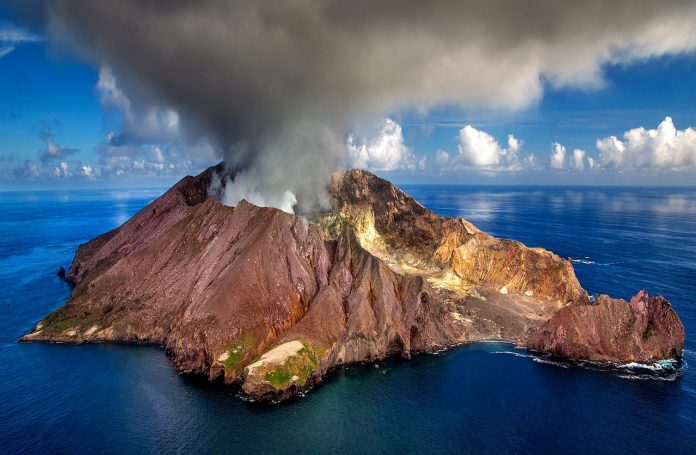As if we needed any reminder of the devastating impact of natural disasters, the recent landfall of Hurricane Florence has displaced thousands in North and South Carolina. Experts have calculated it to be one of the top 10 costliest US hurricanes on record.
According to a Federal Reserve System report, wildfires, floods and volcanic eruptions caused over $306 billion in damages in 2017. Small businesses didn’t escape unharmed either: 61% of small businesses in disaster areas lost revenue up to $25,000, and another 35% lost revenue over $25,000.
Even worse, the Federal Emergency Management Agency (FEMA) reports that nearly 40% of small businesses never recover after a disaster.
Just as you have plans in place to keep your family safe in the event of a tornado or flood, you need an emergency plan to protect a small business that’s based in your home. Here are six things you can do to prepare your home business for survival in the face of disaster.
1. Know Your Risks
First things first: know which natural disasters are most likely to impact your area and to what degree. Residents of southern states are regular recipients of tropical storms, for instance, while the Midwest is the home of Tornado Alley.
But sometimes risks aren’t so clear-cut, and just because you aren’t forced to evacuate doesn’t mean your home is safe from damage.
People living along the northeast coast knew to get out of the way of Hurricane Sandy, but the storm hit homes and businesses hundreds of miles inland and further up the coastline than expected. You’d also be unlikely to associate earthquakes with South Carolina, yet Charleston experienced one of the strongest quakes in US history in 1886. The New Madrid fault through Illinois is about 30 years overdue for a good-sized temblor as well.
To get a handle on your risks, check out the National Oceanic and Atmospheric Association’s climate website for historical trends in natural disasters and forecasts of weather-related crises. The Department of Homeland Security (DHS) also has links on its Ready.gov website where you can learn more about emergency alert systems.
2. Have Plans for Before, During and After
Responding to a catastrophic event is more effective when you’re proactive as opposed to reactive. The Insurance Institute for Business & Home Safety has an emergency preparedness guide that walks small businesses through what should be done at all stages of a disaster.
Any employees working out of your home need to know what to do in an emergency event, too. Provide them with a written evacuation plan and post emergency numbers clearly in the office area. Regular drills are a good idea in especially disaster-prone regions.
Make sure your business stays up and running after an emergency by keeping in touch with your customers and vendors. The US Ready campaign also offers the “Ready Business Toolkit,” a resource guide that offers templates on topics such as communicating during a crisis and creating a plan to avoid the disruption of business.
3. Protect Vital Information
Depending on the disaster, you might have time to grab file folders full of invoices, tax returns and insurance policies. Or you might not, so protecting your important business information is a task that definitely falls into the “before” category of planning.
Experts advise all businesses to duplicate their data using a cloud provider so that vital information is available no matter what happens to your home or office space. You should also make plans to cover what you’ll do to keep the business running in the event your computer or other equipment gets swept away or damaged.
4. Make Sure You Have the Right Insurance
Investing in the proper insurance coverage for your business is a necessity and there can be some tricky nuances to standard policies. Attorney Peter J. Strauss offers advice on finding adequate insurance that includes reading beyond the declarations page. Look closely at the insuring agreement, conditions and exclusions, which he refers to as “the real meat of what is actually covered.”
Additionally, work closely with your agent to craft a policy that covers all aspects of your home business—never assume you’ll be covered by a standard residential policy.
Here are specific things to know about coverage based on the natural disaster:
- Hurricane coverage may only cover damages that occur as a direct result of wind or rain. Once precipitation hits the ground, it’s generally considered flood water, and any damage that occurs won’t be covered by standard business policies.
- Floods are regarded as the most common type of disaster, and they can occur from overflowing rivers or streams, flash floods, storm surges or tidal waves. Most standard business policies don’t cover flooding damage, so you’ll need a separate policy to cover this type of disaster.
- Tornadoes are often not specifically named in insurance policies; instead, “windstorm” coverage applies to damages resulting from the wind and hail that occurs during a twister. Some policies are written to specifically exclude coverage for damage caused by wind or hail, however, so look closely.
- Earthquakes are of particular concerns to any states or areas that sit along major fault lines. Most business property insurance policies don’t cover damage to buildings and equipment, so an endorsement specific to those areas is needed.
- Volcanoes don’t get a lot of airtime, but there are dozens of locations around the country that could be affected by an eruption. Damage caused by the actual explosion or the resulting lava and ash will likely be covered in a standard policy, while damage caused by tremors or landslides related to the eruption may require a separate earthquake endorsement.
5. Consider Business Interruption Insurance
While homes on higher ground may not be damaged during a flood, the roads leading there may be impassable. A regular insurance policy typically won’t provide help if you can’t resume work, but a business interruption policy can be used for the following:
- Loss of revenue
- Rent and utility coverage
- Costs related to temporary workspace
- Additional expenses such as new location advertising
Note that your property insurance must cover the related disaster to qualify for business interruption insurance and there are set time limits for coverage.
6. Know What Resources Are Available to Help
Disaster assistance is available from the Small Business Administration (SBA) in the form of long-term, low-interest loans for expenses not addressed by other coverages. These loans can be used for the repair and rebuilding of losses to real estate or inventory, or to make property improvements designed to mitigate risk in future natural disasters.
Preparation Is Key to Safety
Many people never face the prospect of losing their homes and belongings to a fire or mudslide, but knowing how to react if the unthinkable happens can save your life. Just as you might take the time to pack an emergency kit and run through an escape scenario with your family, put in the effort to build out a safety plan for your business.
When everything you value is located under the same roof, there’s no reason not to protect it all.
Find a Home-Based Business to Start-Up >>> Hundreds of Business Listings.

















































